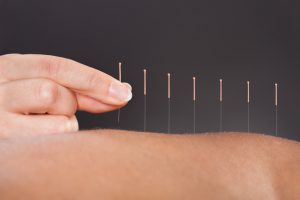When old healing practices are concerned, none are as celebrated as acupuncture. Originating in Ancient China, acupuncture has enjoyed a reputation as an effective way to improve general well-being. Even in the age of modern medicine, this ancient procedure is still popular among the old and the young.
But what makes acupuncture so enduring? And what are its specific effects on a patient’s body?
The Origins of Acupuncture
Traditional belief places the origin of acupuncture in around 2500 BCE in China, making it one of the oldest healing methods in humankind.
The Birth of Acupuncture
Acupuncture was borne out of the philosophy of yin and yang. Chinese societies believe that two complementary forces ruled the cosmic universe. Yin is the female force; it’s a symbol of darkness, absorption, passivity, and the earth. On the other hand, yang is the male force; it symbolizes light, penetration, activity, and the heavens. The yin and yang work together to bring harmony to the cosmic universe and the human body.
An imbalance of yin and yang disrupts the qi (pronounced “chee”), the life force. The qi flows through 12 meridians (pathways) in the body, each associated with a certain organ or function. Disruptions in the flow of qi result in diseases and abnormal conditions.
The goal of acupuncture is to restore the balance of yin and yang in the body, allowing the qi to flow freely. Ancient Chinese people believed that if the qi flowed freely through the bodily meridians, diseases would disappear.
Oldest Evidence
In a 2004 issue of Rheumatology, the official journal of the British Society for Rheumatology, an article reported that the first document that undoubtedly describes acupuncture is The Yellow Emperor’s Classic of Internal Medicine. This record dates from about 100 BCE and presents information about acupuncture in a question-and-answer format. The emperor asked questions while his minister provided the answers.
Subsequent Documentation
Over the next few centuries, acupuncture continued to be codified and documented in various medical records and compendia. Acupuncture became one of the standard therapies used in China. The schools of thought surrounding acupuncture also diversified — some even contracted others.
What remained constant was the philosophy that acupuncture followed the meridian pathways to enable the harmonious flow of qi. Researchers even found bronze statues with markings on the acupuncture points, which were probably used for teaching.
Decline and Revival
Acupuncture, however, didn’t sustain its popularity. It declined from the 17th century because people believed it was irrational and laced with superstition. In fact, an Imperial decree removed acupuncture from the Imperial Medical Institute in 1822. The final blow came when acupuncture was outlawed in 1929, as people began to put a premium on Western medicine.
However, when the Communist government came into power in 1949, it reinstated traditional medicine, including acupuncture. This was possibly driven by increased nationalism. In the following decades, the practice of acupuncture spread to neighboring countries and even the West.
Standing in Modern Medicine
Today, many international medical communities accept acupuncture as a treatment method, and scientific studies have proved its efficacy.
A 2014 article of the journal Global Advances in Health and Medicine reported that over 10 million acupuncture treatments are administered in the U.S. alone.
The Acupuncture Process

The modern form of acupuncture involves inserting hair-like needles into several points in the body, following the ancient meridians. The needles are extremely fine and are inserted about 3 to 10mm deep. Once the needle is inserted, the physician may twist, twirl, or connect it to a low-voltage alternating current.
The goal is to stimulate the central nervous system and release chemicals into the brain, spinal cord, and muscles. These biochemical processes may stimulate the body’s natural healing process.
Conditions that May Benefit from Acupuncture
The Johns Hopkins University School of Medicine report that acupuncture may be beneficial to:
- Headaches
- Dental pain
- Nausea caused by surgical anesthesia
- Nausea caused by chemotherapy
- Menstrual cramps
- Myofascial pain
- Sleep problems
But before you visit any osteopath clinic for an acupuncture session, take note that acupuncture is not for everyone. A person may be at risk of complications if they:
- Are pregnant. As with all medical procedures, extra care should be taken if a person is pregnant.
- Have a bleeding disorder. People with these conditions may have a higher risk of bleeding or bruising from the needles.
- Have a pacemaker. Any electrical pulses applied to the needles may interfere with the pacemaker.
If you’re considering acupuncture, choose a reputable practitioner. More importantly, consult your physician to determine if may help your condition. Acupuncture has been trusted by billions of people over thousands of years, which is why it’s sought after, even in the age of modern medicine. But it’s still best to manage your expectations and speak with your doctor.

